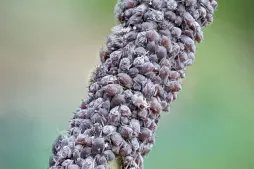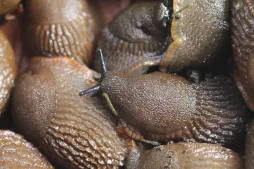Cymbidium aloifolium, the first of the orchids
Legend has it that Cymbidiyum aloifolium was the first orchid known in Europe. Originally from Southeast Asia, the plant was described as early as 1953 by Carl von Linné. Although it has since been supplanted in the hearts of collectors by other varieties of Cymbidium orchids, it continues to seduce purists with its long-lasting, fragrant blooms.
How to recognize Cymbidium aloifolium, the orchid with Aloe leaves?
Cymbidium aloifolium is an epiphytic orchid that grows on the trunks of tall trees and rocks. Its ovoid pseudobulbs are enveloped by long, tough, linear leaves. Their shape and texture are reminiscent of Aloe limbs, hence the nickname Cymbidium with Aloe leaves.
The inflorescence starts at the base of the pseudobulbs. Up to 75 centimetres long, it has a drooping, almost cascading habit. The flower spike comprises around thirty flowers with slender, elongated petals and sepals. Purple at the center, they are mottled with yellow. The darker, three-lobed labellum slopes downwards. Unlike Cymbidium floribundum, the Aloe leaf orchid blooms with a spicy fragrance.
Like most orchids, Cymbidium aloifolium is non-toxic. It is harmless to humans and animals.
Our maintenance tips
Cymbidium aloifolium are well suited to the temperature of our homes. But if you have a conservatory or veranda, install your plant there. It will flower more abundantly and for longer than in a heated room.
Watering
The plant should be watered when the surface of the root ball is dry (about one centimeter deep).
Cymbidium aloifolium tolerant of slightly hard water. You can water them with tap water. If the water is chlorinated, let it stand for 24 hours before use.
Water abundantly with water at room temperature. The amount of liquid should correspond to the size of the root ball.
Drain off any stagnant water in the saucer or planter. It could rot the roots.
Spray
In its natural environment, cymbidium aloifolium benefits fromhigh humidity. To make your plant feel at home in your home, regularly mist the top and bottom of the foliage with non-calcareous water at room temperature.
Repotting
In spring, transfer your Cymbidium aloifolium to a larger pot, so that it can continue to grow.
Cymbidium aloifolium hate change and like to be cramped. Re-pot only when roots and pseudobulbs have colonized the pot.
Choose a deep pierced plastic pot. Its diameter and height should be greater than those of the old container. Prepare a mixture of potting soil for flowering plants (two-thirds) and bark (one-third). You can also use a commercially available orchid mix. Fill the bottom of the pot with a layer of substrate and tamp down.
Remove your Cymbidium with Aloe leaves from its container. If the plant is difficult to dislodge, don't force it. Instead, cut the plastic with scissors. Remove the substrate, loosen the roots and remove any dead bulbs.
Try to identify the front of the plant (where new shoots form) from the back. Plant your specimen with the back of the plant against the pot. This will give the new bulbs more room to grow. Fill in with substrate up to the bulb's limit.
Don't water for a month after repotting. Just mist the substrate to keep it moist. When new roots appear, you can resume watering from above.
Fertilization
Fertilize your plant all year round, except in midsummer.
To promote the growth and flowering of your Cymbidium with Aloe leaves, you can apply a potassium-rich fertilizer, such as an orchid fertilizer.
Prune
Remove wilted flower stems. Cut flush with a clean, sharp tool (scissors, pruning shears, etc.), taking care not to damage the leaves.
Cutting
Cutting is carried out during the strong growth phase, generally in spring and early summer.
When dividing your plant, always keep at least three healthy pseudobulbs per plant.
After cleaning the roots, separate the pseudobulbs. You can use clean secateurs or your hands.
Prepare a deep pierced pot. Fill the bottom with a mixture of potting soil and bark. You can also use a commercially available orchid mix. Place your cutting against one side of the pot, to leave room in front for future pseudobulbs. Fill with substrate and tamp down.
Stop watering and fertilizing for a month. Mist the soil with water to keep it moist.
Diseases / Threats
Information
| Family | Orchids - Orchidaceae |
| Type | Boat orchid - Cymbidium |
| Species | Cymbidium with Aloe leaves - Cymbidium aloifolium |
| Lifecycle | Perennial |
| Foliage | Evergreen |
| Exposure | |
| Substrat | |
| Planting methods |
In pots In tubs |
| Categories | |
| Tag |
Flowery |
| Origin |
Southeast Asia |
| Hardiness (USDA) | 10b |
| Leaf color |
|
| Flower colors |
|
Discover plants from the same family
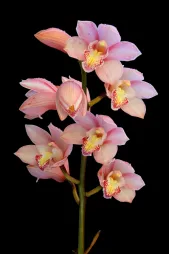
Boat orchid
Discover
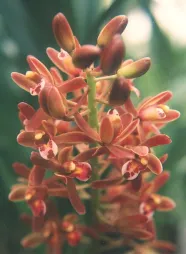
Cymbidium floribundum
Discover
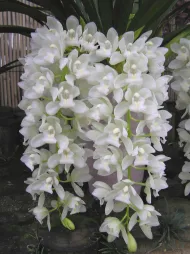
Cymbidium Sarah Jean
Discover
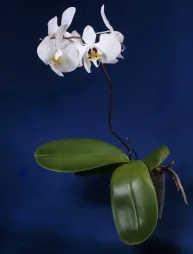
Moon Orchid
Discover












